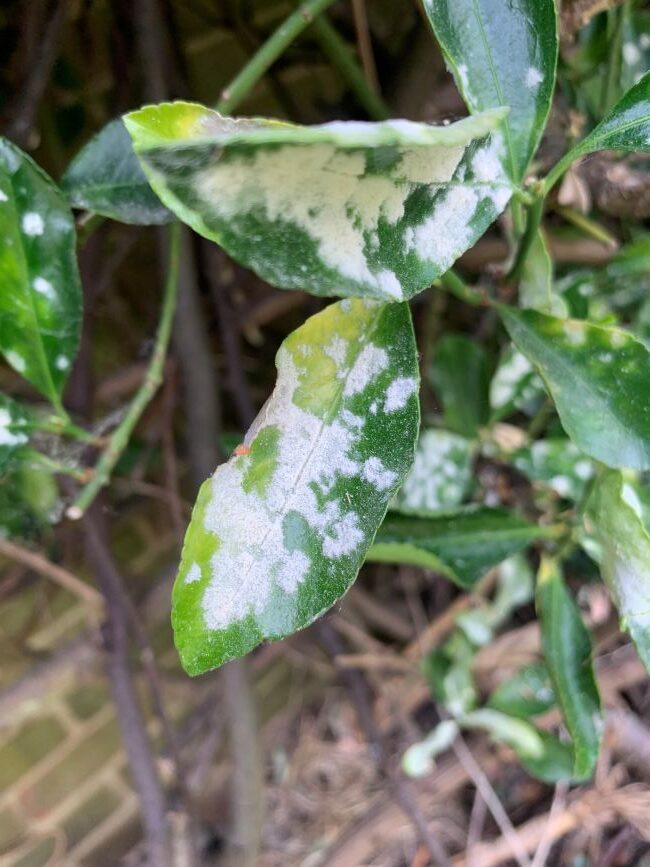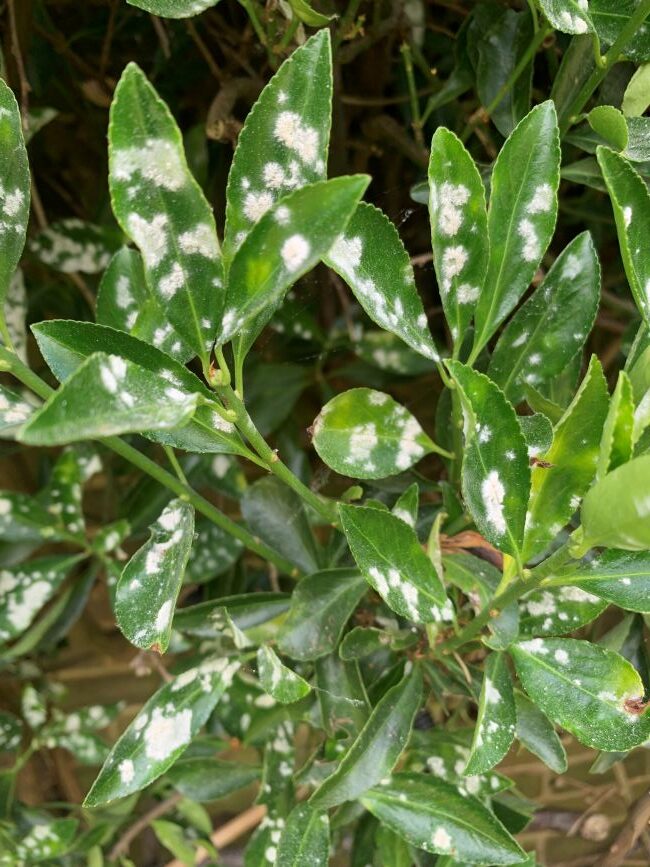Leaf Burn on Salad & White Patches on Pear Leaves: Powdery Mildew or Pear Leaf Blister Mite?


If you have noticed white patches appearing on your salad leaves or pear and cherry tree foliage, it can be tricky to know whether you are dealing with simple leaf burn, powdery mildew, or the less common Pear Leaf Blister Mite. Below are some quick checks and practical steps to help you diagnose the problem and treat it effectively.
1. Leaf Burn on Salad
Symptom: Pale or white patches on salad leaves, often with a dry, papery feel.
Likely Cause: Watering during the hottest part of the day. Water droplets can act like tiny magnifying glasses, scorching the leaf surface.
Fix:
- Water early in the morning or late in the evening.
- Aim water at the soil, not the foliage.
- Provide light shade during very hot spells.
2. White Patches on Pear Leaves – Quick Diagnosis
- Wipe Test – Gently wipe the affected leaf with a damp cloth:
- If the white coating smears, it is probably powdery mildew.
- If nothing comes off, look for tiny raised blisters; this points to Pear Leaf Blister Mite.
- Look for Blisters – Raised or sunken corky areas are typical of blister mite damage.
3. Powdery Mildew on Pear Trees
Identification:
- White, powdery coating on young and mature leaves.
- Thrives in warm, dry weather with high humidity.
- Leaves may curl, yellow, and drop prematurely.
- Often worse in shady, poorly ventilated spots.
Treatment & Management:
- Prune for Airflow – Thin congested branches and remove heavily infected leaves (bin them, don’t compost).
- Fungicide Sprays – Use sulphur‑based or potassium bicarbonate products every 7–10 days while infection is active. Spray in the cool of early morning or evening.
- Homemade Remedy – Mix 1 tbsp baking soda + ½ tsp liquid soap in 1 litre water. Shake and spray weekly.
- Feed Wisely – Apply a balanced organic fertiliser; avoid high‑nitrogen feeds that encourage soft, mildew‑prone growth.
- Mulch & Water – Mulch the root zone to conserve moisture. Water at the base rather than wetting the leaves.
Long‑Term Prevention:
- Choose mildew‑resistant pear varieties when replanting.
- Maintain an open canopy through regular pruning.
- Keep the tree healthy to improve natural resistance.
4. Pear Leaf Blister Mite (Phytoptus pyri)
Identification:
- White or pale patches that later turn brown or black.
- Patches feel slightly raised or blistered – part of the leaf tissue, not a surface coating.
- Caused by microscopic mites burrowing into the leaf in early spring.
Management:
- Dormant Oil Spray – Apply horticultural or winter tree oil before bud‑break in late winter to smother overwintering mites.
- Remove Affected Leaves – Pick off and destroy badly damaged leaves to reduce the mite population.
- Monitor Annually – Blister mite rarely threatens tree health unless infestations recur heavily each year.
Summary
- Salad leaves with white patches are usually suffering from sun‑scorch; adjust your watering routine.
- Pear leaves with a white, wipe‑off coating indicate powdery mildew – treat with improved airflow and fungicide.
- Blister‑like patches that do not wipe off point to Pear Leaf Blister Mite – use dormant oil and leaf removal.
By following the simple checks and treatments above, you can quickly restore your crops and fruit trees to good health and prevent future outbreaks.